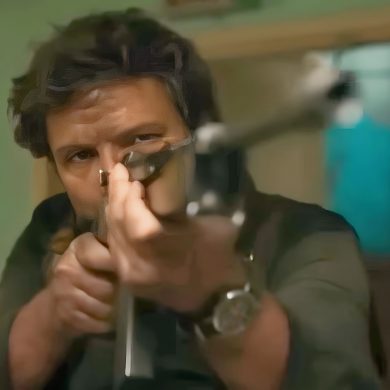
Series Premiere: July 8, 2021
Licensed by: Netflix
Episodes Commissioned: 4
Studio: TMS Entertainment

Some History...
The cinematic adaptation of Capcom's beloved horror franchise Resident Evil, has always been met with mixed responses from the devout, and enthusiasts of the genre. The slew of Milla Jobovich live action, feature length films had always been met with a less-than favourable reception while heralded by a cult following that adored the cheesy late 90's to early noughties aesthetic that elongated its presence, with Sony Pictures greenlighting five sequels. While it was labelled "Resident Evil", it was loosely tied in with its gaming origin involving the T-Virus outbreak at an underground facility, however it was a narrative of to its own accord. Not until its sequel was there a glimmer of mainstream casting with Sienna Guillory as Jill Valentine. Sure there were subtle connections made with mention of characters and the Red Queen as the antagonist, but it was never a retelling of events rather a coinciding tale.
In the lead up to Netflix's live action adaptation comes RESIDENT EVIL: Infinite Darkness, a short CGI Anime television series that follows Resident Evil 2 protagonists Claire Redfield and Leon Kennedy, between the events of the fourth and fifth entry into the gaming series. Announced at the Tokyo Game Show 2020, in a virtual panel due to the ongoing COVID-19 pandemic, lead programmer and series Executive Preoducer Hiroyuki Kobayashi, announced the television adaptation of the franchise, with Eiichiro Hasumi (Assassination Classroom, Wild 7) signing on as director at the Biohazard Showcase earlier this year, alongside Yugo Kanno (Cells at Work!, JoJo's Bizarre Adventure) as musical composer. A manga is currently under development by publisher Tokyopop, that will summarise the series in comic-book format.
⚠ Main Plot (Warning: Spoilers)
In October of 2000, a civil war had seemingly broke out between the people of Penamstan. The US Army send its forces in on the government’s behalf, despite the UN’s reluctance. A Spec-Ops force known as the Cougar Six are plunged into a district northwest of their base, which has been invaded by insurgents. A helicopter is taken down, leaving Alpha Two isolated within the city for the terrorists to quickly flank them. In an effort to save any survivors of the crash, the Mad Dogs – a trio of high ranked officers within the US Army – drop in and investigate the crash site, only to be swatted by more of the insurgent clan. As nightfall approaches the rebellion team string the deceased members that had fallen from the Helicopter crash, soaking them in petrol with the intent to light the bodies, only for one to unexpectedly awaken.
We jump forward to the year 2006, with much of Penamstan in a state of dystopia, post-war. TerraSave have been dispatched to aid refugees with food and shelter, while special forces continue to investigate the scene. Claire Redfield, senior member of TerraSave helps a young boy who was only a child during the conflict, but is severely traumatised to the point where he’s mute. Mentally paralysed, despondent and confined to a wheelchair, Claire ensures his safety while trying her best to gauge a response from the distressed teen. Holding onto a sketch-pad, the former STARS officer requests to look at his works, but is disturbed by what she unravels. A depiction of bloodshed, with humanoid monsters feasting on flesh; a story of what had occurred the night of aforementioned events.
Meanwhile, the White House is on alert as a computer terrorist has compromised all confidential files stored within the president’s quarters. Indications point towards an insider gone rogue, after it was detected that the system circumvention took place on a Local Area Network. President Graham oversees the entire investigation, with his Chief of staff and Defence secretary closely consulting. Everyone present is placed under investigation of being a lead suspect in the case, including ex-pat Jason, Patrick, Shenmei and series protagonist Leon S. Kennedy. After saving the President’s daughter during the Anti-Umbrella Pursuit, Leon is considered a close acquaintance to the nation’s leader.
As Leon arrives to the white house – fashionably late – the power is cut, and the Secret Service begin sprawling through multiple corridors right to the Oval Office, further indicating a traitor within the ranks. The three officers present rush out of the office to investigate, with Patrick finding Press Secretary Spacer, slowly bleeding out after being attacked and mauled. Quickly heading into cardiac arrest, Patrick prepares first aid only for Spacer to quickly decompose into zombie-form, and attack Patrick. Leon arrives just in time to save him by shooting Spacer dead. Flanked by Metro SWAT, Jason, Shenmei and Leon begin to scour the White House for the possibility of any other Zombies, an begin to quarantine anyone that may have come in close contact with Spacer, with the chance that the T-Virus had returned.
Commentary & Highlights (Warning: Minor Spoilers)...

What a thriller. Resident Evil continues to astonish gamers and the cinephiles around the globe, this is another example of why the property entails endless possibility. An ever-evolving product that can take beloved heroes and set them on their own conquest between chapters, skewing the narrative for campaign connection and possible franchise longevity for the foreseeable future. The Resident Evil Remakes have been a commercial success, nominated for multiple game of the year awards, critically acclaimed for the re-imagining of their classic counterparts. With their modern twist re-establishing a newfound adoration, it’s only right that the series look to expand its lore with more trials and affairs, that would make for a palatable precursor of remakes. Not to delve too deep in spoilers, but the connection between Resident Evil 4, the events that precede its sequel, then Resident Evil 5’s connection to the recent Village release, it’s all coming full circle.
But the story told in Infinite Darkness, is one that needs clarification. Hoping this is the first of a multi-season episodic television series, Claire Redfield’s involvement was somewhat filler, while Leon’s presence took up a great chunk of screen time. I would have loved to see their relationship flourish further, but it would spell a departure for what’s to come. The backstory of Penamstan, the rising case of infections that have been stabilised thanks to the Tricell drug which keeps the effects of infection suppressed, and leak of the T-Virus are quite the fascinating sequence of events. But again, with the series pertaining a consistent focus on its lead, it missed the mark on narrative evolvement, and hearkened back time and time again to the civil war in a myriad of flashbacks that honestly, weren’t needed. It had been clarified that the virus was present and spreading again, all I wanted to know was, how?
By the end of Episode two, the story begins to unfold with more details about our series antagonists and their intention but its never clearly detailed as to what kind of connection this had to the government, and if it it was just conspiracy. There’s more detail that tends to trickle throughout the remaining episodes but again, without a feeling of resolve, it does leave the door wide-open for a potential second season. If by chance Netflix gives the green light, and continues to produce the series then it definitely needs an overhaul to its writing team. Better structure would most certainly be appreciated, and merit of having staple characters such as Claire present from the onset. Don’t waste potential, utilise it. I praise casting for allowing a reprisal for each character’s voice actor from the remake series to return and portray their characters. Nick Apostolides absolutely nails his leading role as Leon, while Ray Chase boasts a booming range that was almost unrecognisable as Jason. Stephanie Panisello deserved more airtime as Claire, while the familiar tones of Billy Kametz as Patrick was certainly a pleasant surprise. Overall, I do highly recommend the series regardless of its glaring issues, but it undoubtedly delivers what many Resident Evil fans would love in a televised adaptation.
Noteworthy Mentions (Warning: Minor Spoilers)...
- Needs More Claire. While Leon dominates screen-time with a narrative that’s told vicariously through him, Claire’s presence is almost unnecessary.
- Fantastic Side-quest to two underrated entries. If you haven’t had the chance to play both Resident Evil 4 or Resident Evil 5, the prospect of both being awarded the remake treatment is quite alluring.
- Read between the lines, connect the dots. The narrative conveyed does have more meaning than some may get from it. Not only is the plot directly pointed towards the fourth and fifth tale, but leaves fragments of Ethan Winters’ own tumultuous trials. Now that’s art.
- Give us a second season, and flesh out the story. This series deserves a follow-up with more clarification. I just hope Netflix allows it to happen while the production works on the Live Action adaptation.
VERDICT: HELL YES🔥

Years after the horrors of Raccoon City, Leon and Claire find themselves consumed by a dark conspiracy when a viral attack ravages the White House.
Summary: Netflix








